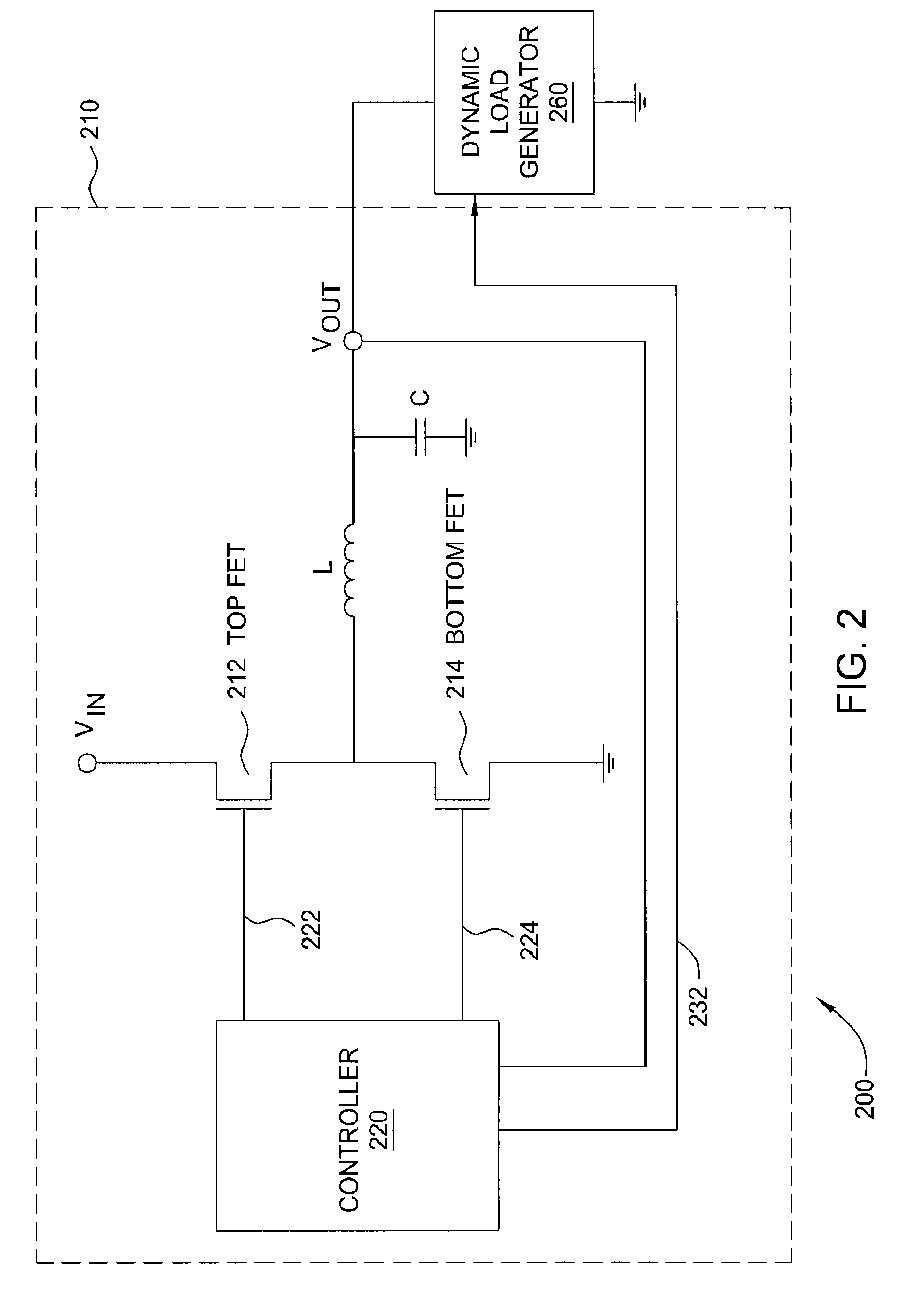System and method for testing worst case transients in a switching-mode power supply
a power supply and switching-mode technology, applied in the field of power converters, can solve the problems of shortening affecting the service life of the power supply, and affecting the operation so as to achieve the effect of reducing the number of transients produced, and reducing the service life of the power supply
- Summary
- Abstract
- Description
- Claims
- Application Information
AI Technical Summary
Benefits of technology
Problems solved by technology
Method used
Image
Examples
Embodiment Construction
[0016]FIG. 2 illustrates a testing system 200 for testing the worst-case transient in output voltage that a switching-mode power supply will produce in the face of a varying load, according to one embodiment of the present invention. As shown, the testing system 200 includes a switching-mode power supply 210 connected to a dynamic load generator (DLG) 260. The SMPS 210 includes a top FET 212 and a bottom FET 214. Similar to FIG. 1, the top FET 212 and the bottom FET 214 are controlled by a controller 220 through connections 222 and 224, respectively. When the DLG 260 provides a constant load to the SMPS 210, the controller 220 ensures that an input voltage (shown as “Vin”), is converted into the desired output voltage (shown as “Vout”) by setting the duty cycle, frequency, and / or phase shift of the top FET 212 and the bottom FET 214 to appropriate values.
[0017]The controller 220 turns the top FET 212 and the bottom FET 214 on or off by turning their respective gate voltages on or of...
PUM
 Login to View More
Login to View More Abstract
Description
Claims
Application Information
 Login to View More
Login to View More - R&D
- Intellectual Property
- Life Sciences
- Materials
- Tech Scout
- Unparalleled Data Quality
- Higher Quality Content
- 60% Fewer Hallucinations
Browse by: Latest US Patents, China's latest patents, Technical Efficacy Thesaurus, Application Domain, Technology Topic, Popular Technical Reports.
© 2025 PatSnap. All rights reserved.Legal|Privacy policy|Modern Slavery Act Transparency Statement|Sitemap|About US| Contact US: help@patsnap.com



